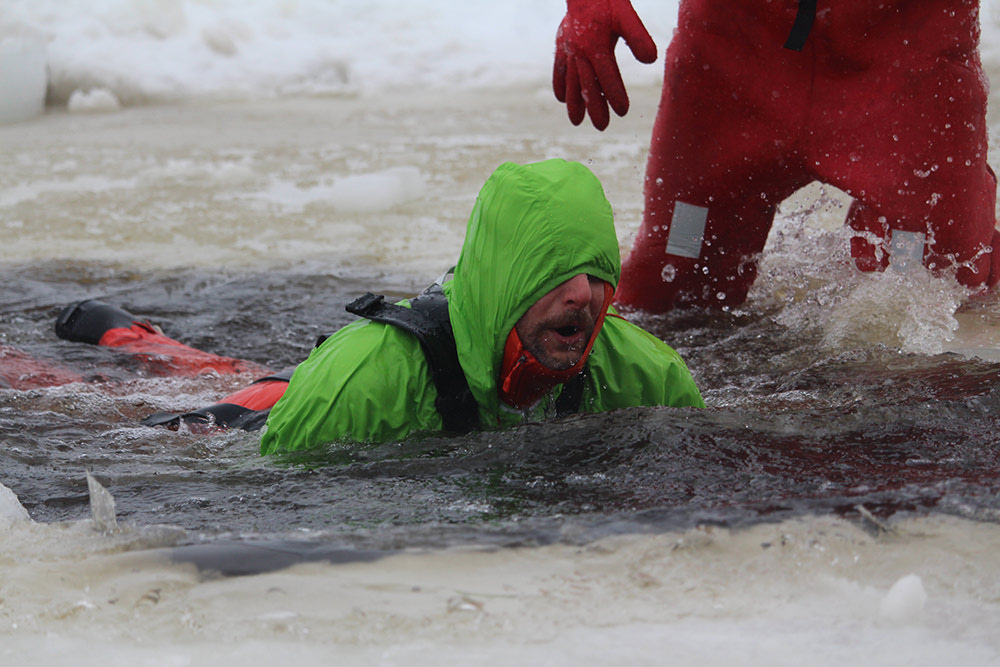As Tim Laurence tried to get feeling back in his fingers, after climbing out of the freezing water at Bark Lake, he described the shock as he leapt in.
“Like a slap across the entire body. Just suddenly was on fire,” Laurence said. “Pretty much just disconnected from everything else. It was like 100 per cent focused on the cold.”
It was an experience Laurence willingly exposed himself to as part of the working and playing on ice training course held at the Bark Lake Leadership and Conference Centre Jan. 30. The course, done in partnership with Wilderness Rescue Solutions, offered participants a full day of lessons on safety precautions around frozen bodies of water and how to self-rescue in the event you fall underneath the ice.
The course’s participants were primarily Bark Lake staff but did feature two students from the general public. Wilderness Rescue Solutions operations manager Scott Hembruff said the company has been trying to get more people in the general public to take the course.
“Every night, turn on the news, another snowmobile went through the lake,” Hembruff said. “There’s a real kind of struggle to get that message across to people so they don’t go out on the ice.”
Bark Lake assistant general manager Maria Paterson said the course has been run intermittently at the camp for the past eight years. She said the course offers important skills, especially considering the limits on some firefighting services to do ice rescue. “Cross-country skier, snowshoer, if you’re an ice fisher, if you just enjoy being out on the ice, the safety is in your own hands,” Paterson said.
Laurence said he wanted to take the course as someone who spends a lot of time travelling on ice surfaces.
“This has inherent risks and I do my best to manage those,” he said. “Any additional information is valuable.”
Hembruff also offered a demonstration of self-rescuing after falling beneath lake ice. He said the technique is based on the principal of one-10-one: one minute to control breathing, 10 minutes to pull yourself out before muscles stop working and one hour before hypothermia sets in. He also said it is important to take proper precautions to measure ice before stepping onto it.
Rapid changes in temperature make that important, he added.
“It’s plus five degrees for a week and then its minus 20 for a week,” Hembruff said. “There’s a lot of change and with that change, it’s not as easy to predict what the ice is going to be.”
Laurence said he thinks he is better prepared to handle himself around the ice – and what to do if he falls under it.
“I have a better sense of what’s at play,” he said. “I have a better sense of kind of the magnitude of what I’m dealing with and the thought process involved.”





